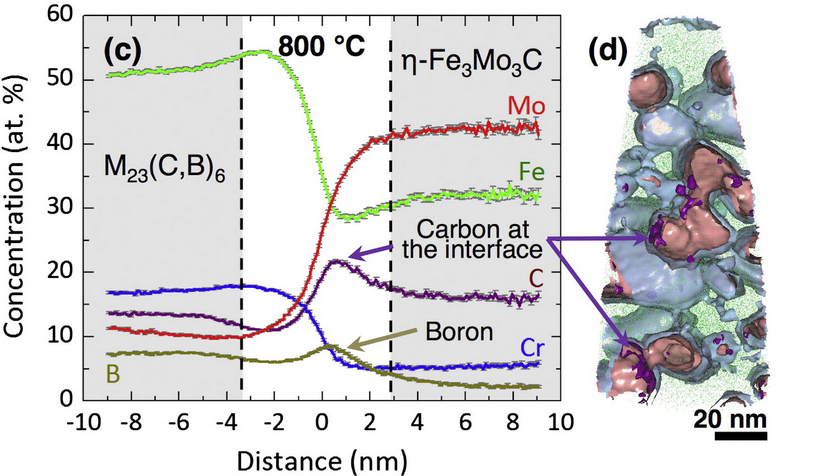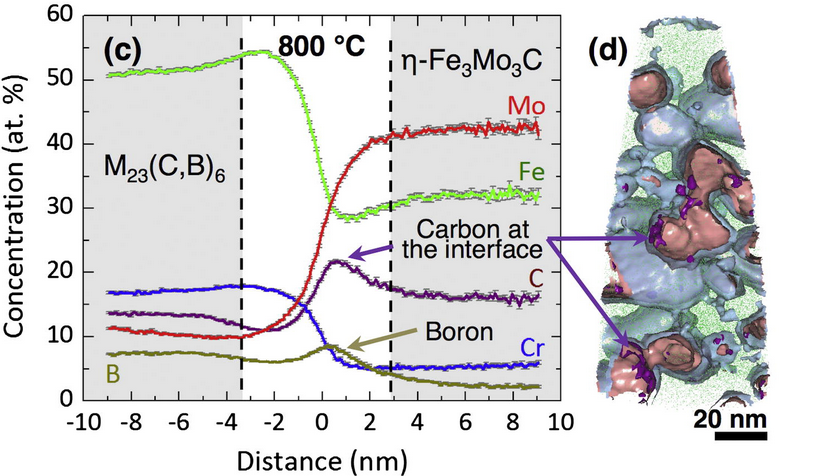Crystallization, phase evolution and corrosion of Fe-based metallic glasses: An atomic-scale structural and chemical characterization study
Understanding phase changes, including their formation and evolution, is critical for the performance of functional as well as structural materials. In this project we analyze in detail microstructural and chemical transformations of the amorphous steel Fe50Cr15Mo14C15B6 during isothermal treatments at temperatures ranging from 550 to 800 °C.
By combining high-resolution transmission electron microscopy and Rietveld analyses of X-ray diffraction patterns together with the local chemical data obtained by atom probe tomography, this research provides relevant information at the atomic scale about the mechanisms of crystallization and the subsequent phases evolution. During the initial stages of crystallization a stable (Fe,Cr)23(C,B)6 precipitates as well as two metastable intermediates of M3(C,B) and the intermetallic v-phase. When full crystallization is reached, only a percolated nano-scale Cr-rich (Fe,Cr)23(C,B)6 and Mo-rich Fe3Mo3C structure is detected, with no evidence to suggest that other phases appear at any subsequent time. Finally, the corrosion behavior of the developed phases is discussed from considerations of the obtained atomic information.

